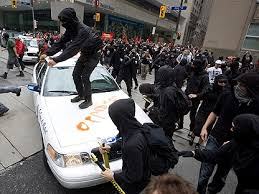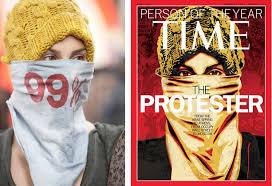Teaching Activism?
- Anke Schwittay

- Nov 27, 2020
- 6 min read
Updated: Sep 14, 2021

After sending my manuscript to Bristol UP, I have been spending the last week covid-izing my teaching for next term. No easy task, since all of my teaching is very interactive and hands-on. This is especially the case for an MA module on Activism for Development and Social Change I have been teaching for the last five years. The module features prominently in the last chapter of my book on Prefiguring Alternatives, where I explore the possibilities of teaching activism in the classroom and what such teaching can contribute to students imaging alternative responses to global challenges. This post is a shorter version of what’s in the book, plus some material that did not make it into the draft.
A controversial topic
When I was assigned the module upon joining Sussex in 2014, with the freedom to redesign it, I used the opportunity to realize a long-held vision of a module that would equally combine theory and practice. In the course of researching how best to do that, I came across several reflective accounts by other educators who have been teaching activism: Robert Huish’s undergraduate classes at Dalhousie University in Canada have included students organizing their own public demonstrations and working with an organization helping North Koreans escape. (Colleagues who read a draft of my chapter thought especially the latter was quite extreme and potentially unethical – having fled a communist country myself in 1989 I saw less problems). An MA in Activism and Social Change ran for nine years at Leeds University in the UK. What was most interesting in these accounts was the reactions these programs had received from different corners.

At Dalhousie, some professors and administrators worried that such programs could be high-jacked by radical elements and result in violence. Others were concerned about reputational implications for the university. Huish’s protest classes did get some (mostly negative) media attentions, leading to newspaper comments such as ‘here we go, another commie course taught by some washed out hippie. Why are students paying tuition to take this crap?’ Not surprisingly, these perceptions were influenced by what was happening in the streets: in 2010, the first year the module was taught, riots took place in Toronto against the G20 meetings. A year later, Time Magazine made ‘the protestor’ the Person of the Year in response to a wave of non-violent uprisings around the world, most notably the Arab Spring and Occupy, and helped to convince university administrators of the value of Huish’ class.
Black block tactics such as during the Toronto protests often lead to negative public perceptions of protesters, while the Occupy movement was one of the reasons why Times Magazine made protesters their person of 2011.
(Photocredits https://www.cp24.com/violent-black-bloc-tactics-hit-toronto-during-g20-protest-1.526840 and https://www.commondreams.org/views/2011/12/22/time-magazines-protester-eyes-have-it)
Most thought-provoking for me were reactions by activists, who questioned whether activism can actually be taught, especially from within the privileged spaces of universities. As Stuart Hodkinson, one of the co-founders of the Leeds MA wrote: A common reaction is that the very essence of an elite-level university degree in ‘radical activism’ is a contradiction in terms as universities are “part of the problem” and the course will inevitably be exclusive to white middle class kids who will go on to become ‘professional elite’ or ‘career activists’ and ‘social movement managers’. By placing activist education within the constraints of the universities, the course will “quash the radical spirit of activism” and “divert energies” from real movement building. The argument goes that activism cannot be taught; it can only be experienced. . . Others argue that the university will not like such courses and will eventually shut them down, or force compromises to course content that render the whole exercise meaningless. There is also some hostility to us, the course tutors, for seemingly “making a career” on the backs of “real activists.” It seemed to me that teaching activism was seen as either too radical or too conformist.
Combining theory and practice
In my own module, I wanted to combine theory and practice, to enact praxis in the classroom – introducing students to theories, methods and strategies of activist movements, illustrated with historical and contemporary examples and giving them the opportunity to apply their learning by working in groups to design activist campaigns on their own topics. Through such learning by doing, I wanted students to explore their own agency to engage structures of power and to experience activism ‘as a process of challenges and moral dilemmas more than as an experience that brings clear answers and solutions to social problems,’ as Huish has put it. This practical learning has been new for most students who have taken the module, who have usually not done much campaign work before and certainly not in a university context. When I do get experienced activists taking the module, it is an extra treat for all of us as we learn from their experiences. In addition, because the campaign design involves intense group work with students from lots of different disciplinary, professional and geographical backgrounds (since the module is offered to MA students from different degrees), this aspect of the module provides personal learning opportunities as well.
The groups produce a campaign report for assessment, and over the years I have received over thirty reports of amazing quality and variety, showing how deeply and intensely students engage with the campaigns. An overview of these reports reveals a commonality of themes and a localization of issues that show students’ interests and passions:
projects addressing issues relevant to Sussex university, including housing, sexism on campus, the commodification of education and campus spaces, digital dependency and the use of slave labor
projects advocating for changes in how the British public, and especially Brighton residents, learn about and interact with refugees and migrants, ranging from setting up a community cooking club, childrens’ play classes and awareness-raising events
campaigns focusing on work-place related discrimination, such as the gender pay gap, mental health stigmatization and sexism at work
projects targeting homelessness in Brighton, through providing better services, advocating for the council to fulfil its legal commitments and educating people about the complexities of homelessness
4 campaigns on environmental sustainability and 4 focused on changing education
In the book, I look at several examples in-depth, especially those that engage artistic methods and those that focus on education in particular. Here I just want to highlight two of these campaigns.
Active Empathy Collective

Artistic creation was central to a student group that constituted itself as the Active Empathy Collective and proposed a campaign called Yarl’s Wood Speaks. In response to a hunger strike of women detainees at the Yarl’s Wood immigration removal centre, the campaign aimed to raise public awareness of the UK immigration system through an interactive art exhibition on the theme of home, belonging and freedom. Its central focus was the use of testimony by former detainees, participants in a detainee befriending program and visitors of the exhibit. Using a feminist approach, the campaign conceived of testimony as an active process of meaning-making, a personal and political platform for enacting change, and a catalyst for generating self-reflection, empathy and a critical collective consciousness towards immigration injustices. The campaign’s objective was to make these experiences actionable by connecting people to advocacy organizations and urging them to contact their MPs to pressure Parliament to extent legal protections for refugees and terminate indefinite detentions. The campaign report included a mock-up of the gallery space, throughout which exhibition items had been thoughtfully placed to enhance visceral audience engagement and participation.
Teach British Colonialism
The campaign Teach British Colonialism advocated against the current ‘white-washing’ in the UK’s secondary school history curriculum, which makes minimal reference to slavery, colonialism and empire. Proposing a pilot project with two Brighton secondary schools, the campaign aimed to combat institutional racism and privileged ignorance and also bring about structural change through a petition to Parliament to review the national history curriculum. The group also planned a social media outreach campaign, and its campaign report included sample social media posts, showing non-White activists and historical figures, such as Sophie Duleep Singh, a suffragette, and Olaudah Equiano, whose autobiographical account of slavery I talk about in my economics chapter.

From student evaluations and personal reflections that students write as part of their assessment, I know that the module and especially the campaign design component, teaches students about activism, themselves and their abilities to enact change in the world. They often comment that ‘not just reading about activism but enacting it in practice’ brings the topic to life and shows them the often invisible work undertaken by activists before their actions become public. I am looking forward to teaching the module again next spring, I just have to figure out how to make this all work under COVID conditions. Any tips?






Comments